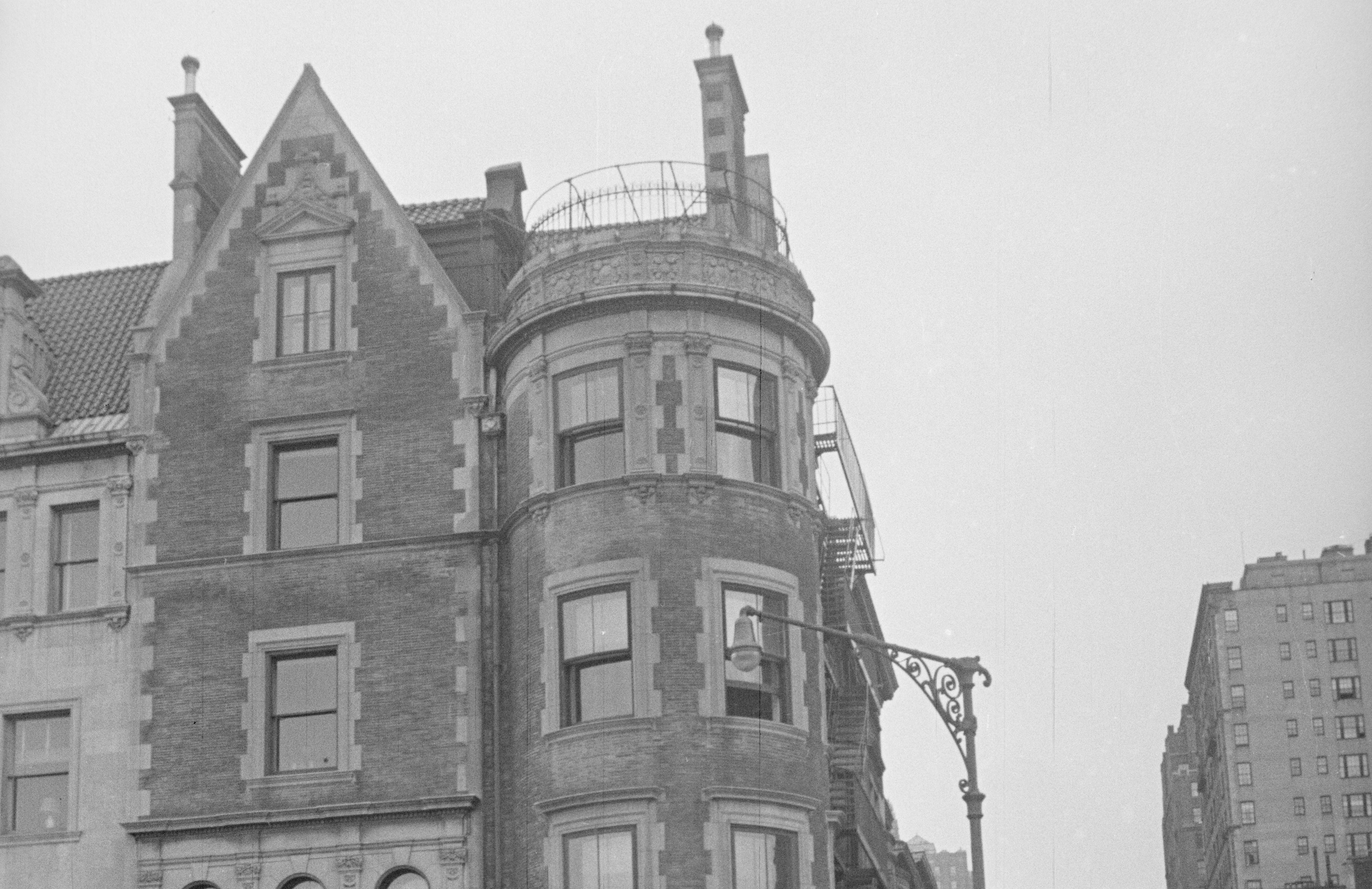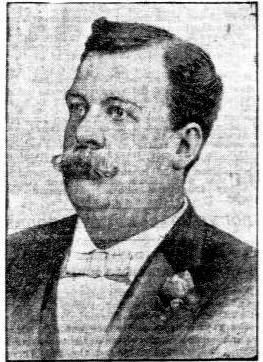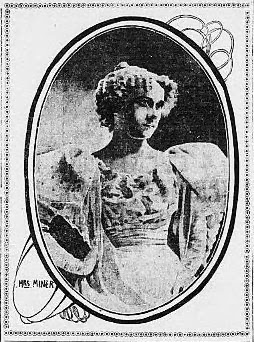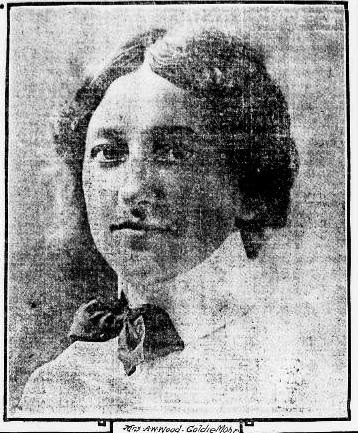
Miner Mansion-40 Riverside Drive
by Tom Miller
In her 1904 book A Loiterer in New York, Helen W. Henderson describes the completed Riverside Drive. “When one turns through many busy byways, from the banal city straggling northwest from Columbus Circle into the romantic windings of the Riverside Drive, the whole face of nature assumes a different aspect. This priceless view of the Hudson, then revealed, saved by some miracle from the base uses of commerce, yet terribly menaced by railroad encroachments, as we are daily reminded, is one of the enchanting reserves of New York, the one instance, as one might say, in which advantage has been taken of the inherent beauty of the island formation.”
The “enchanting reserves” took decades to complete. Along the curving Drive that followed the contour of the cliffs rose mansions that rivaled Fifth and Madison Avenues. Their breathtaking views of the Hudson across Riverside Park were unrivaled.
By the time, Helen Henderson wrote about the Drive, architect Clarence True had clearly made his mark here. Responsible for scores of houses on the Upper West Side, by the mid-1890s he was working as both developer and architect. Much of the flavor of the area—Flemish gables, hefty turrets and whimsical balconies—were the result of his preference to historic architectural styles. While True turned to historic styles for inspiration, he was not a slave to historical accuracy; preferring to create a picturesque and charming structure rather than a reproduction. The New-York Tribune said of him, “Mr. True is noted for boldness and originality in his building enterprises, and has probably done more toward the introduction of new styles and plans in our local domestic architecture than any other architect.”
In 1897, Clarence True completed a row of houses that included the 32-foot wide mansion at the northeast corner of Riverside Drive and 76th Street. Constructed of buff-colored brick on a base of limestone, the French Renaissance residence was five stories tall with 17 rooms, an elevator and 4 bathrooms. True took full advantage of the corner plot by designing a nearly circular bay that separated the two nearly planar elevations on either side.
The new mansions were sold to wealthy businessmen. No. 337 West 76th Street was sold on November 17, 1897 to a vice-president of the New York Central and Hudson River Railroad; just three days after The New York Times had reported, “The purchase of a Riverside Drive residence by Henry C. Miner stands at the head of a small list of dealings in private dwellings.” That house was No. 40 Riverside Drive and cost the new owner $125,000—over $3 million today.
Henry C. Miner had one of the most varied resumes of his day. After graduating from the American Institute School, he became a pharmacist. The New-York Tribune would later say, “He grew tired of the drug business and studied medicine under his brother, Dr. Edward Miner.” When the Civil War broke out, he enlisted as a pharmacist in the Mechanics and Artisans’ Regiment.
Following the war, he became an agent for Professor De Courcey who lectured on medical subjects. Then, in 1864, he became manager for Signor Blitz, a magician and bird trainer. Then he managed the Thayer & Noyes Circus. When the American Institute opened its fair in the Crystal Palace in 1868, Miner served as Secretary. Still bored, he thought perhaps his career should be in police work.
Less than two years later the 64 year old Miner met the much younger actress Annie O’Neill while she was playing in “His Wife’s Father” in Washington.
Henry Miner joined the police department and was stationed at the Mercer Street Station. “This was even more unpleasant than being a drug clerk and Mr. Miner decided to get into something else,” said the Tribune.
The ever-resourceful “Harry” C. Miner built and managed a series of theaters including the London Theatre in the Bowery, the Fifth Avenue Theatre, Miner’s Bowery Theatre, and Miner’s Eighth Avenue Theatre among others. In addition, he founded the Henry C. Minter Lithographing Company, a drugstore on the Bowery and one on West 125th Street (operated by the Henry C. Miner Drug Company); held large interests in locomotive companies and controlled the Piedmont Cable Road of Oakland, California. In addition, with all of this he still had time to serve a term in Congress.
Miner and his wife of thirty years, Julia, had four grown sons when Julia died in 1894. Less than two years later the 64 year old Miner met the much younger actress Annie O’Neill while she was playing in “His Wife’s Father” in Washington. In February 1896, their engagement was announced and they were married within the year.
The newlyweds moved into the Riverside Drive mansion; but not all was serene on the family front. Miner’s sons were vehemently against the marriage and a rift developed between them and the millionaire. The Evening World reported “Mr. Miner did not attempt to conceal his bitterness toward his sons after he married Miss Annie O’Neill, a well-known actress…He declared that the young men had not only opposed his marriage, but had persistently slighted their stepmother.”
Also in the house with the Miners and their staff was Annie’s mother. Although Henry was an active member of the New York Athletic Club and visited the clubhouse frequently, the family was socially quiet.
The Evening World said “The house is filled with beautiful furniture, rich hangings and rare bric-a-brac. Mrs. Miner’s apartments, on the third floor, overlooking the Hudson, are luxurious, and in these are many interesting souvenirs of travel, picked up in this country and abroad. A fine library is a feature of the Miner house.”
The population in the mansion increased when Harry Miner became a father again. Little John L. Miner was born on January 10, 1900.
A few weeks later, on Wednesday February 22, the new father spent the evening playing billiards at the New York Athletic Club. He returned home around 1 a.m., rose around 10 in the morning and spent the day at home. Around 3:00, he decided to go out driving, as he did every day, and ordered his carriage. While he waited, he asked the butler to bring a cup of tea and suggested to Annie that she call her mother down to join them.
The New York Times reported, “Mrs. Miner left the room to comply with his suggestion, and as she did so Mr. Miner arose from the chair in which he was sitting and started to walk to the table on which the butler had placed the tea tray. As he moved he staggered and turned pale.”
According to the New-York Tribune, “He had just strength to reach a chair and call: ‘Annie, Annie, come quick! I feel so queer!’”
Annie, her mother, and the servants did what they could for him and messengers were sent for Drs. Steven Edson and George Rogers, both of whom lived nearby. Another servant rushed to find a priest. When the doctors arrived at the house, Miner was unconscious. According to The Times, “Father Taylor of the Church of the Blessed Sacrament had been sent for, but he arrived too late to see Mr. Miner alive.”
The Evening World, on February 27, wondered about the state of the will and the $2 million estate: “Mrs. Miner, it is said, has persistently pleaded the cause of his sons, and has urged him to overlook his grievances and to make ample provision for them.
“If he adopted his wife’s suggestions, the four sons by the first marriage will receive comfortable fortunes, and there will be no cause for a contest. The birth of a son about six weeks ago will involve a complication, unless Mr. Miner, as though probable, specially provided for this contingency last Summer or made a later will.”
Thanks to Annie’s gentle intervention, Henry C. Miner’s four grown sons were included in his estate of around $2 million. His infant son, John, however, was not. Miner had not gotten around to amending his will.
Despite for former animosity between the grown sons and the former actress; the settlement of the estate was amicable. On February 28 The New York Times reported that the provisions of the will “are entirely satisfactory to all the members of Mr. Miner’s family, and that there will be no contest.” The estate was divided among Annie and the sons in five equal portions; and little John Lansing Miner who was not included in the will was provided for “by agreement of all parties.”
The will instructed, “Mrs. Anne O’Neill Miner is also to receive the testator’s residence at 40 Riverside Drive, New York, free of all encumbrance, together with his horses and carriages, and other provision for her maintenance.”
Three months later Annie was looking for a new butler and placed an advertisement in the New-York Tribune. She insisted he be “German with good references” and offered wages of $45.
Within the year, however, Annie hung a yellow “For Sale” sign in the front window. On November 25, 1901, The Evening World reported on Annie’s inducement to sell. “‘I have my own ideas of a house,’ Mrs. Miner said when asked to give her reasons for disposing of the property, ‘and I intend carrying out these ideas. Oh, yes, I know this house is very charming and of course beautifully situated. But I have a longing to make a home which shall be just to my taste in every particular.’”
For her dream home, Annie Miner said, “First of all, the neighborhood must be unexceptionable.” Her choice of a four-story home on the northwest corner of Madison Avenue and 63rd Street apparently signaled a change of mind.
The sign in the reception room window did not produce a buyer and on December 7, 1901, the Riverside Drive residence and its furnishings were sold at auction. Auctioneer C. E. Smith called the sale of the “magnificently furnished mansion” an “unparalleled display of rich effects and luxurious appointments, principally made to special order, and assuredly unsurpassed in any offering made this season.”
The house was purchased by Alan W. Wood, Pittsburgh steel tycoon “for something over $100,000.” And the sale was an eerie case of déjà vu.
Now, widowed, her mother’s former fiancé turned his attentions to her.
Just before the Civil War broke out, Alan W. Wood had prepared to marry Sallie Suter (whom the New-York Tribune said, “Had no lack of admirers”). Both came from prominent Pennsylvania families and Wood’s father owned the Conshokocken steel rolling mills.
On the day before the wedding, Sallie disappeared. The New-York Tribune reported, “When she returned she told her friends she was the wife of Theodore Mohr, who had been working in her father’s home, as a painter’s apprentice, and made love better than any of the students.”
Despite the scandal and humiliation, Wood remained friends with Sallie. He married, had six children and amassed a fortune of between $15 and $20 million in the steel industry. In the meantime, Sallie’s daughter, Goldie Lillian Mohr, grew to be a beautiful young woman and moved to New York where she took to the stage at the turn of the century.
“My face is my fortune,” she told a reporter. “Without my beauty I could not get an engagement on the stage. As it is, I can earn $25 a week for a season of forty weeks. I can hold my beauty and my place on the stage for twenty years. That is $20,000 and $10,000 for increased salary due to added experience and the total value of my beauty if $30,000.”
As it turned out, Goldie Mohr would not have to depend on the stage for her income. Now, widowed, her mother’s former fiancé turned his attentions to her. The romantic relationship between the chorus girl and their father caused heated animosity among Alan Wood’s now-adult children.
The same year that Wood purchased the house, he sold his steel business to the United States Steel Corporation and retired. He furnished the former Miner mansion with costly antiques, including a salon suite of Louis XVI furniture. The furnishings were said to cost “more than $100,000”–equal to what he paid for the mansion itself. Perhaps because of his family’s intense objections, however, he would not marry Goldie until March 1905.
Even before “he caused much gossip in social circles by marrying…Miss Goldie Lilian Mohr, at that time a member of Weber & Fields’s company,” as the New-York Tribune put it, Wood’s name appeared in local newspapers. When bicycle policeman Kielly noticed the millionaire’s limousine speeding “at a lively pace” in the Bronx on the night of September 17, 1904 he pursued the vehicle and arrested the chauffeur, Joseph Romero.
The steel magnate was displeased with the inconvenience and shouted out to the cop “You will go out the first of October to make room for a good policeman.”
Two days later when Romero appeared before the judge, he protested, “What could I do? I had to obey my boss’s orders.”
The magistrate was inclined to agree and told Policeman Kielly “You should have arrested the owner of the automobile. If you arrest any owners who are caught this way, I’ll hold then for trial all right.”
Perhaps as an appeasement, following the marriage Alan Wood “turned over his residence at No. 40 Riverside Drive to his children and lived with his wife at the Barnard, in Central Park West, in what might be called a modest apartment for a man of his wealth,” said The Evening World. The autumn-spring couple lived quietly. “They were infrequent visitors at the theatres and the restaurants where the gayety of Broadway life blossomed at midnight. There was no flaunting of diamonds and fine raiment in the faces of her former associates by the wife of the elderly Pittsburg steel magnate.”
Five months after the wedding Alan Wood was operated on at Roosevelt Hospital for appendicitis. On August 13, 1905, the New-York Tribune ran a headline “Alan W. Wood Seriously Ill.” The following day he died.
On August 15, Goldie Mohr Wood left her apartment on Central Park West to look at her husband’s embalmed body for the last time. The New-York Tribune said, “She exhibited much grief.” Another difficult hurdle lay in store. “She will meet at the funeral to-day, for the first time, sons and daughters of Mr. Wood, who were offended by her marriage to their father and who may possibly contest his latest will, if it is found to give her too large a share of his estate,” said the newspaper.
The settlement of the estate was expectedly uncomfortable and contentious and the real property was liquidated as quickly as possible. On Wednesday April 18, 1906 the mansion on Riverside Drive was once again put up for auction. The auctioneer advertised the property as “one of the handsomest dwellings on Riverside Drive.”
It was purchased by Max D. Brill, a founder of Brill Brothers men’s clothing firm. A self-made man, Brill left New York in 1880 at the age of 14 to make his way in the West. Seven years later, he returned and, with $300, started a clothing business with his brothers Maurice and Samuel. By the time Brill purchased the Riverside Drive house, he was making millions.
The Brills raised four daughters and a son in the house and Mrs. Brill was as well known for her political activities as for her social and philanthropic works. She was chairman of several women’s Republican committees and in 1928 was personally thanked by President Coolidge for her work.
The Brills stayed on in the house for decades, eventually seeing the engagements and marriages of their children. In the meantime, 1920 appears to have been a difficult time for Mrs. Brill in terms of staff. In February she advertised for a “Butler and useful” and later that year for a “Ladies’ Maid, willing to go to West End, Long Branch, N.J. for the summer.”
On April 22, 1934, Mrs. Brill died in Mount Sinai Hospital at the age of 56. Her husband would survive four more years, dying of a heart ailment at the age of 72 on January 29, 1938. Seven months later the house was sold to the Riverside School. The New York Times noted, “The dwelling will be altered for school uses.”
The exclusive pre-school accepted students aged four or five and prepared them for elementary school. Although the mansion was converted to classrooms throughout, (an apartment for the caretaker and supervisor was arranged on the top floor); an incredible amount of original architectural detailing was preserved.
The school remained in the house for decades. When the institution left, the house was divided into two grand, multi-story apartments. As realtors are wont to do, a romantic back-story was invented that artist Marc Chagall lived here in the 1940s—sharing space, apparently, with kindergarten children.
The dramatic history that played out within the walls of No. 40 Riverside Drive, however, needs no embellishment. The mansion was the stage for two fascinating acts in New York City social and theatrical history.
Tom Miller is a social historian and blogger at daytoninmanhattan.blogspot.com





